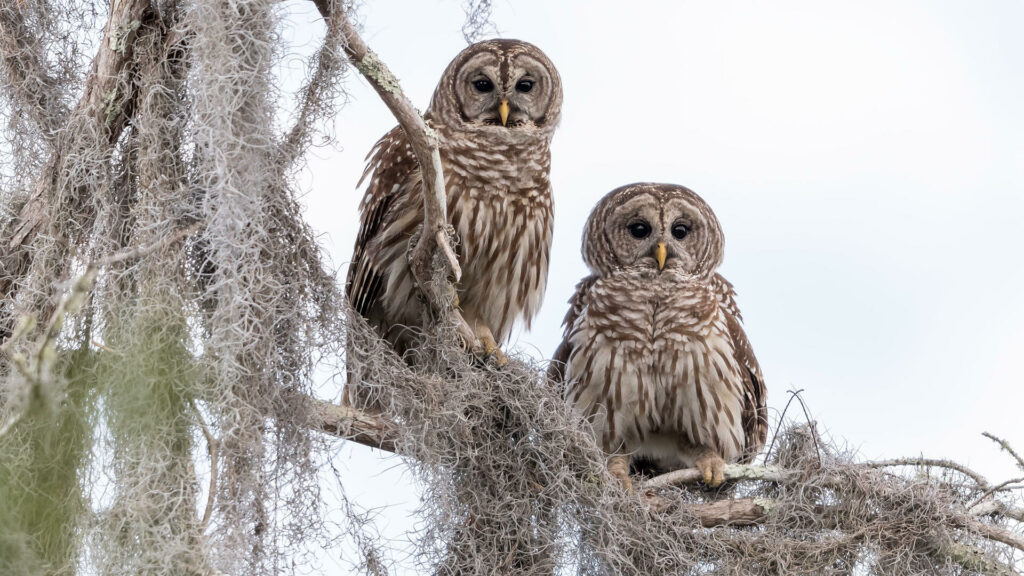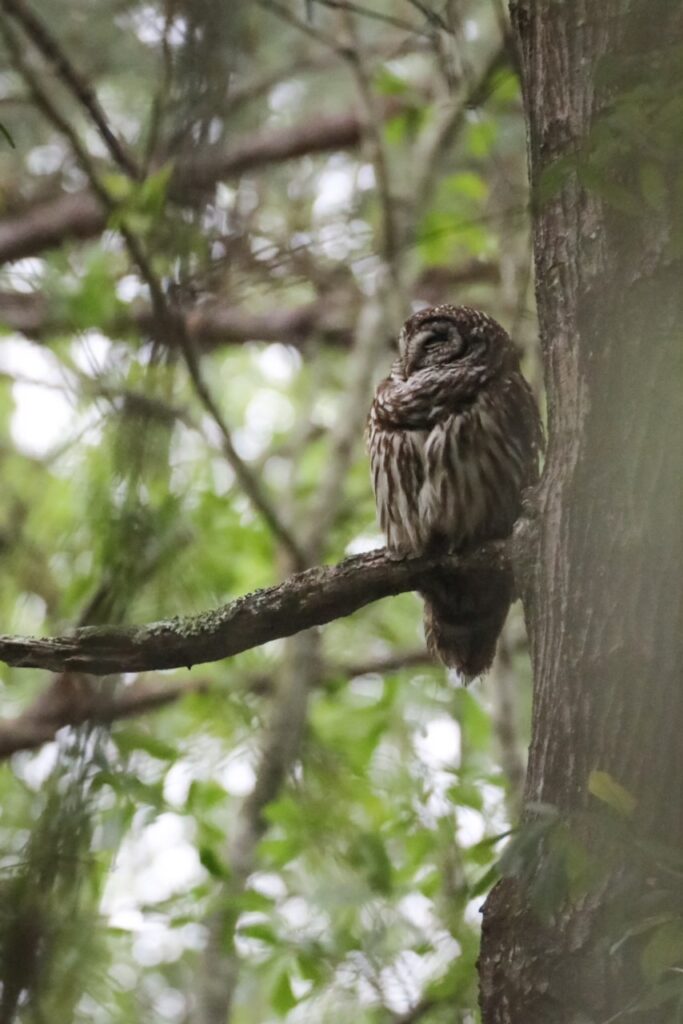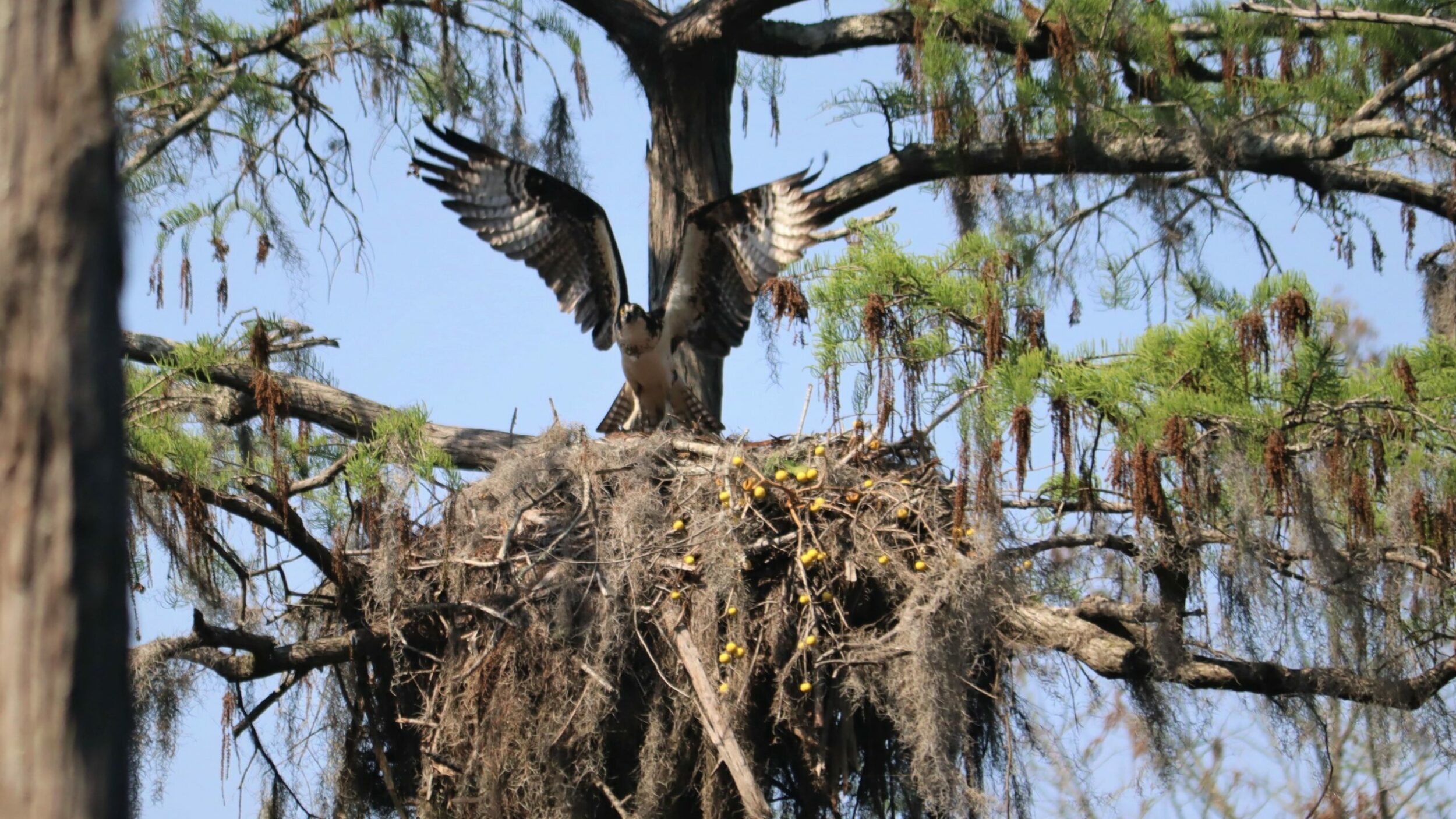
Strix varia
Barred owl
The barred owl is one of the most prominent bird figures in the Southeastern United States. With a rather sedentary lifestyle, this bird hunts, fishes, and lives year-round in the Ogeechee River Basin. Often, an owl’s dwelling place can be found in a hollow tree trunk or in a previously abandoned nest but spotting the barred owl is a rarity. It boasts a brown and white speckled hide that blends perfectly into any mature forest. A birder is likely to hear its voice long before detecting its camouflage presence.
Barred owls can weigh anywhere from 1 to 2.5 pounds, carried on a wingspan of up to 4 feet wide. Like many birds of prey, the owl has a muted flight presence that allows it to catch prey off guard. Breeding pairs generally mate for life, or at least for several consecutive years. They may lay 1-5 eggs per year, though 2 or 3 is most common. Juveniles will begin exploring outside of the nest at about 4 weeks old.

The barred owl is responsible for finding its own dinner, made feasible by its ingenious features. The owl has extremely large eyes that capture as much light as possible, making dusk and nightfall into primary hunting hours. Its nocturnal nature is combined with keen ears, and prey is often unaware it is being stalked.
Choosing small rodents like mice and rabbits to frogs, snakes, or lizards, the barred owl is an opportunistic predator. Of course, its hunting skills are rivaled closely by fishing interests. As a native of the Ogeechee River Basin, it is known for gliding over the water and hooking fish with coveted grace.
Lauren Porter contributed to this post.
